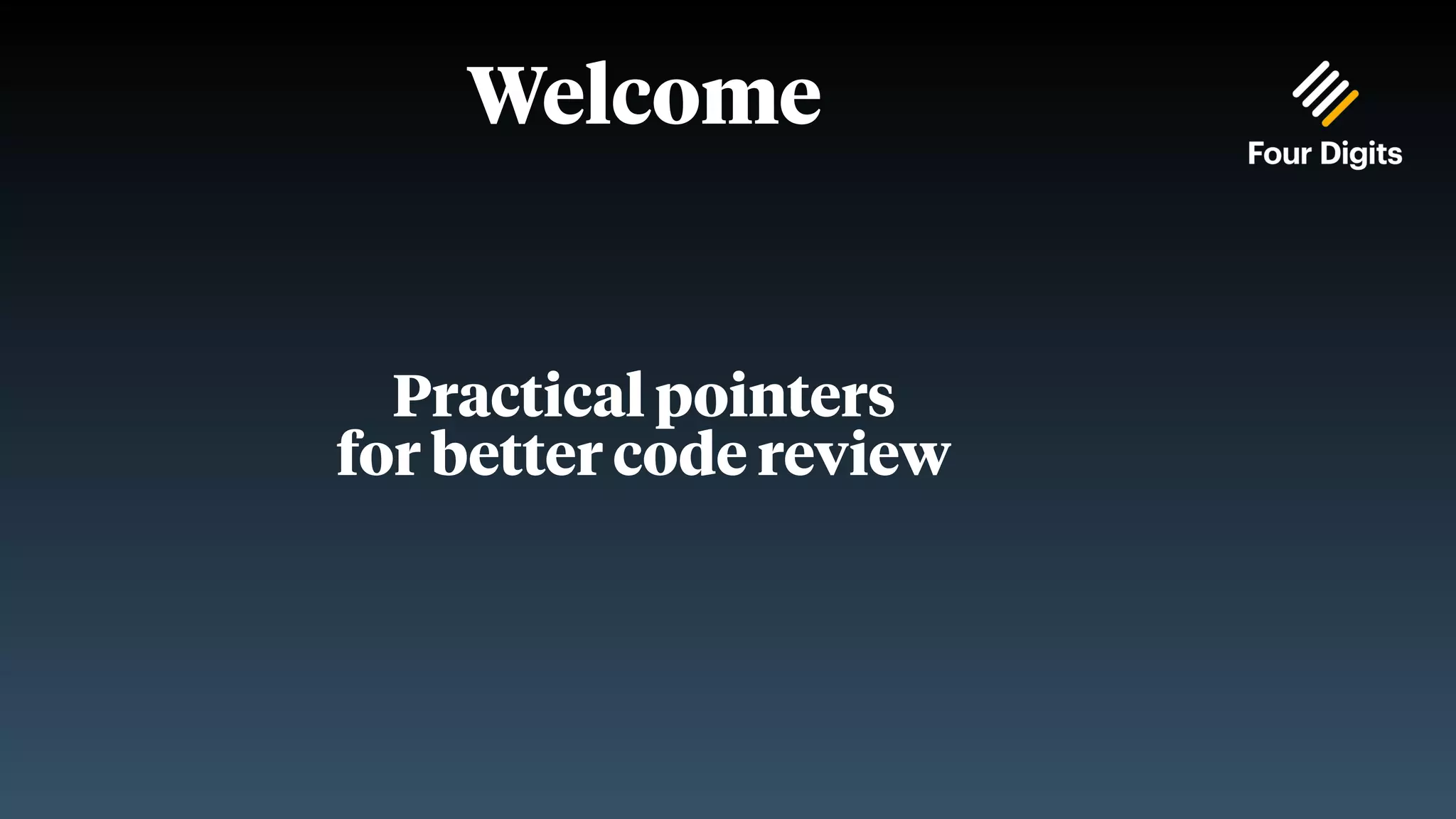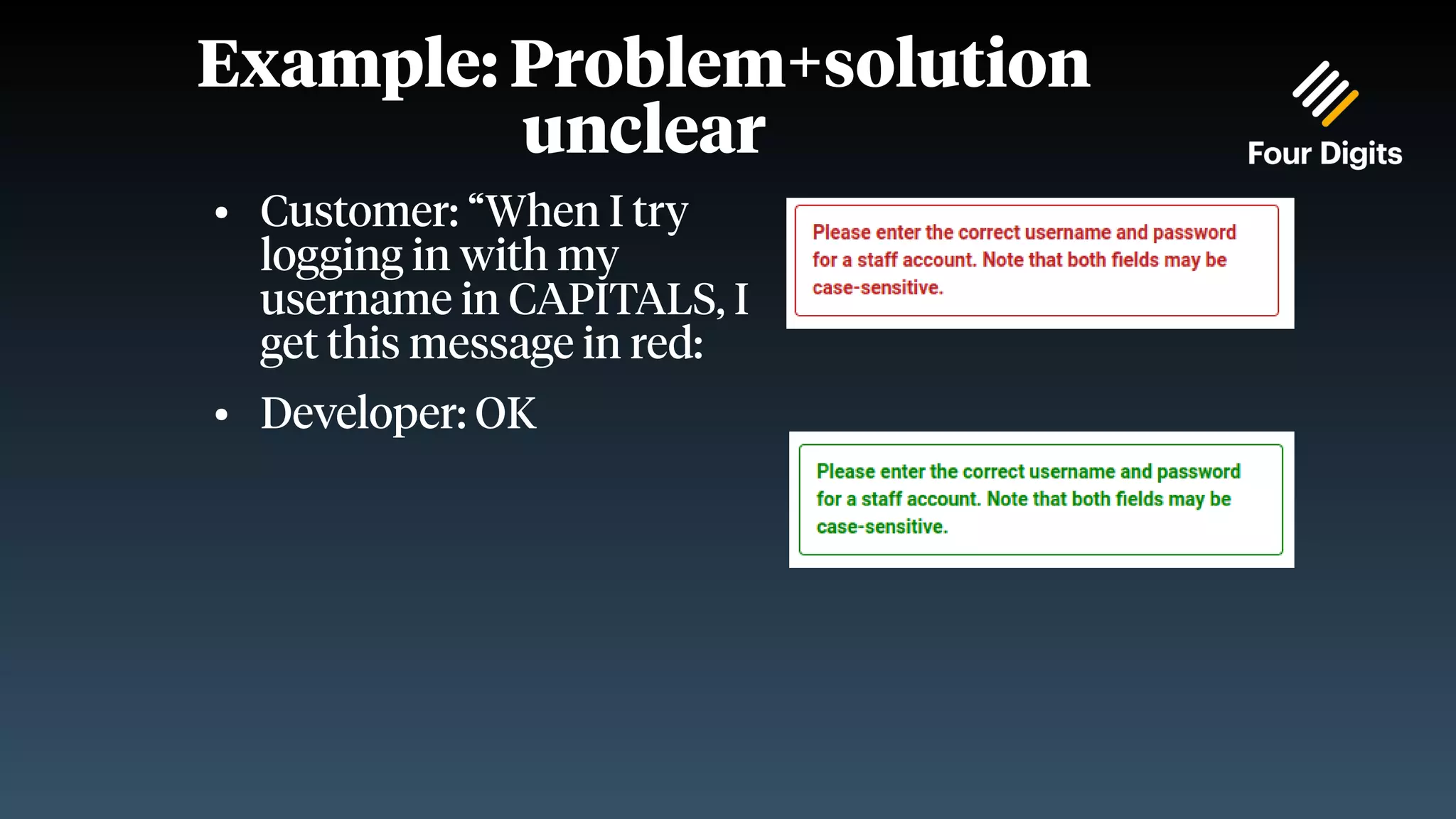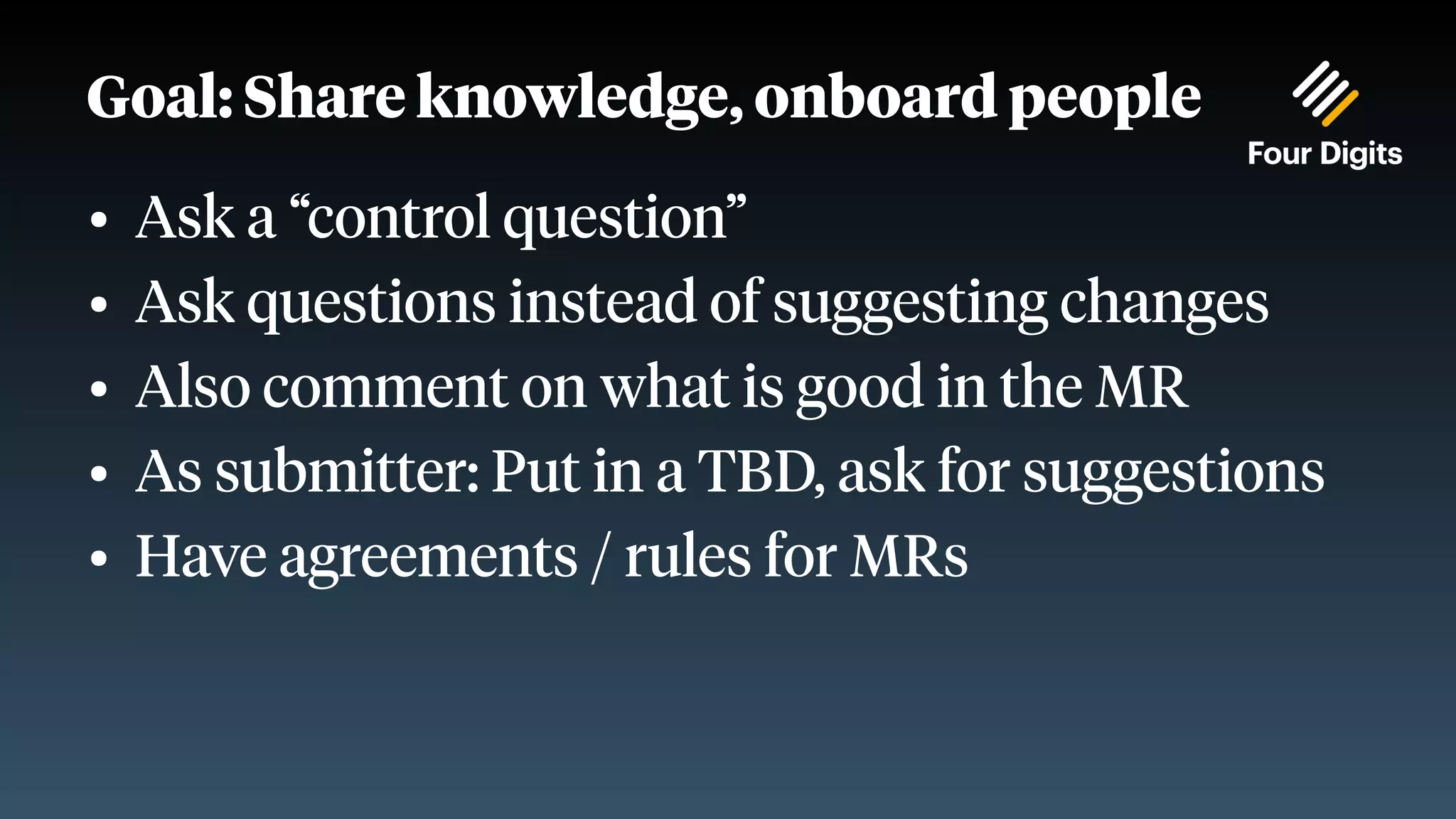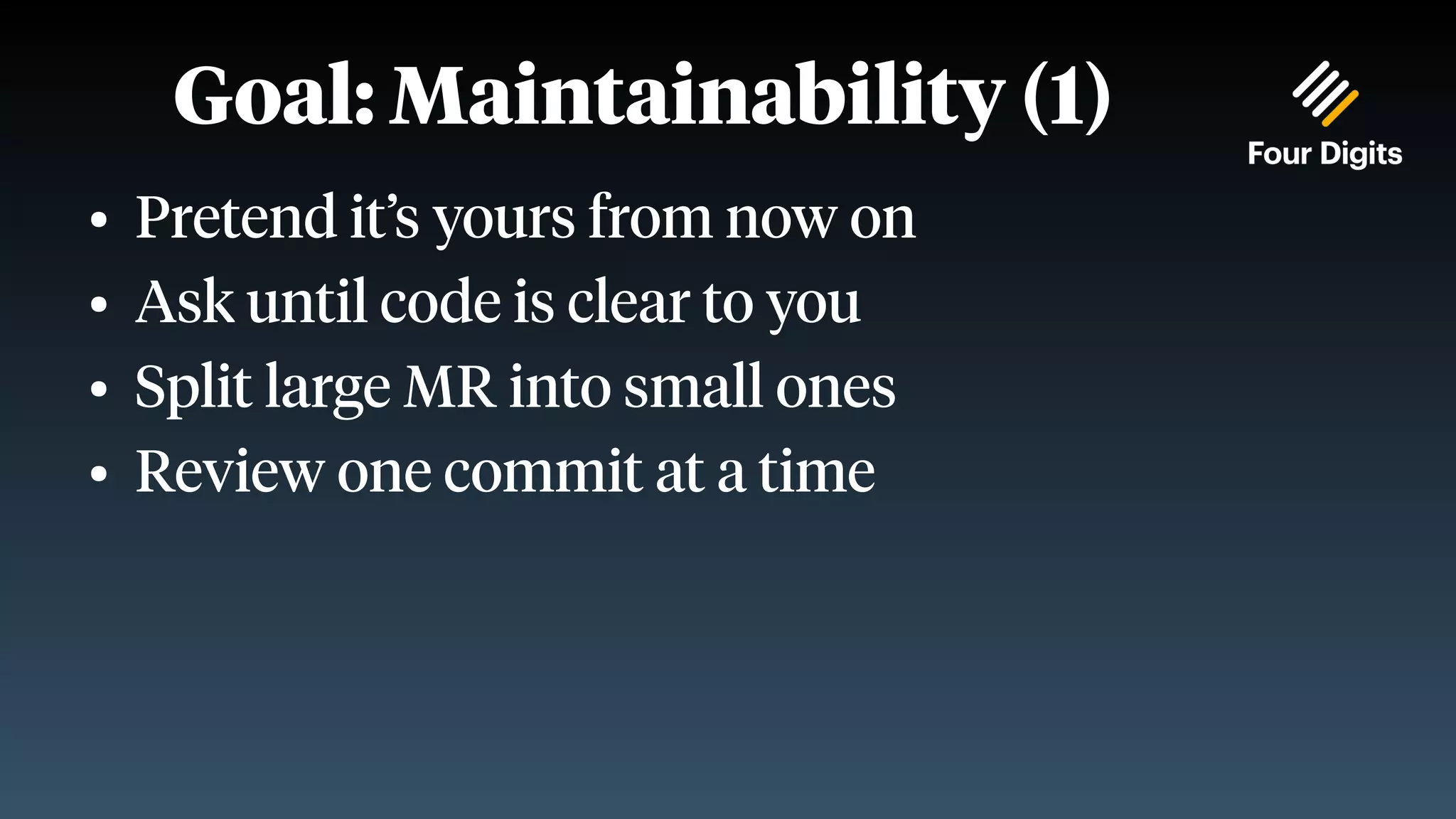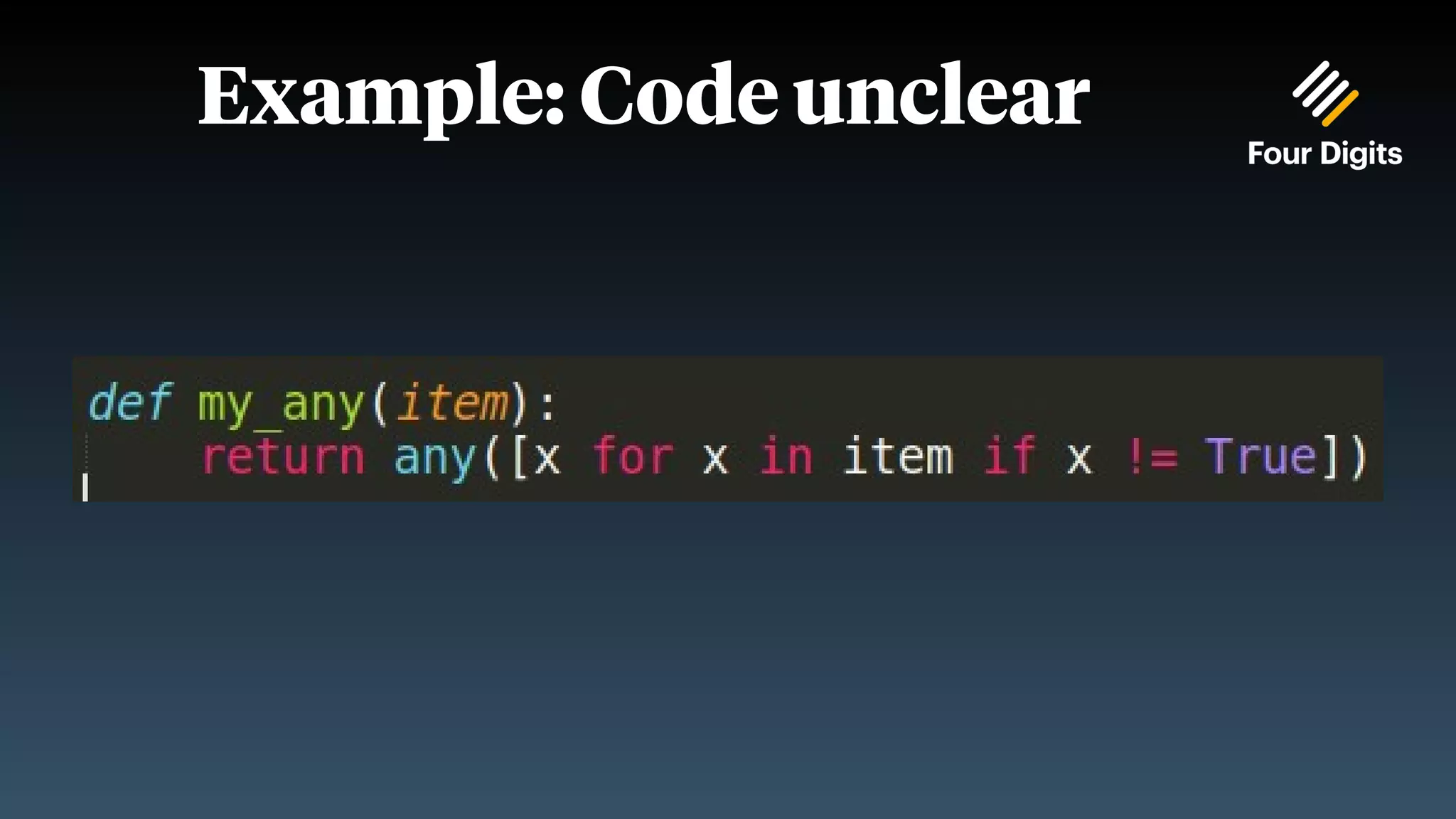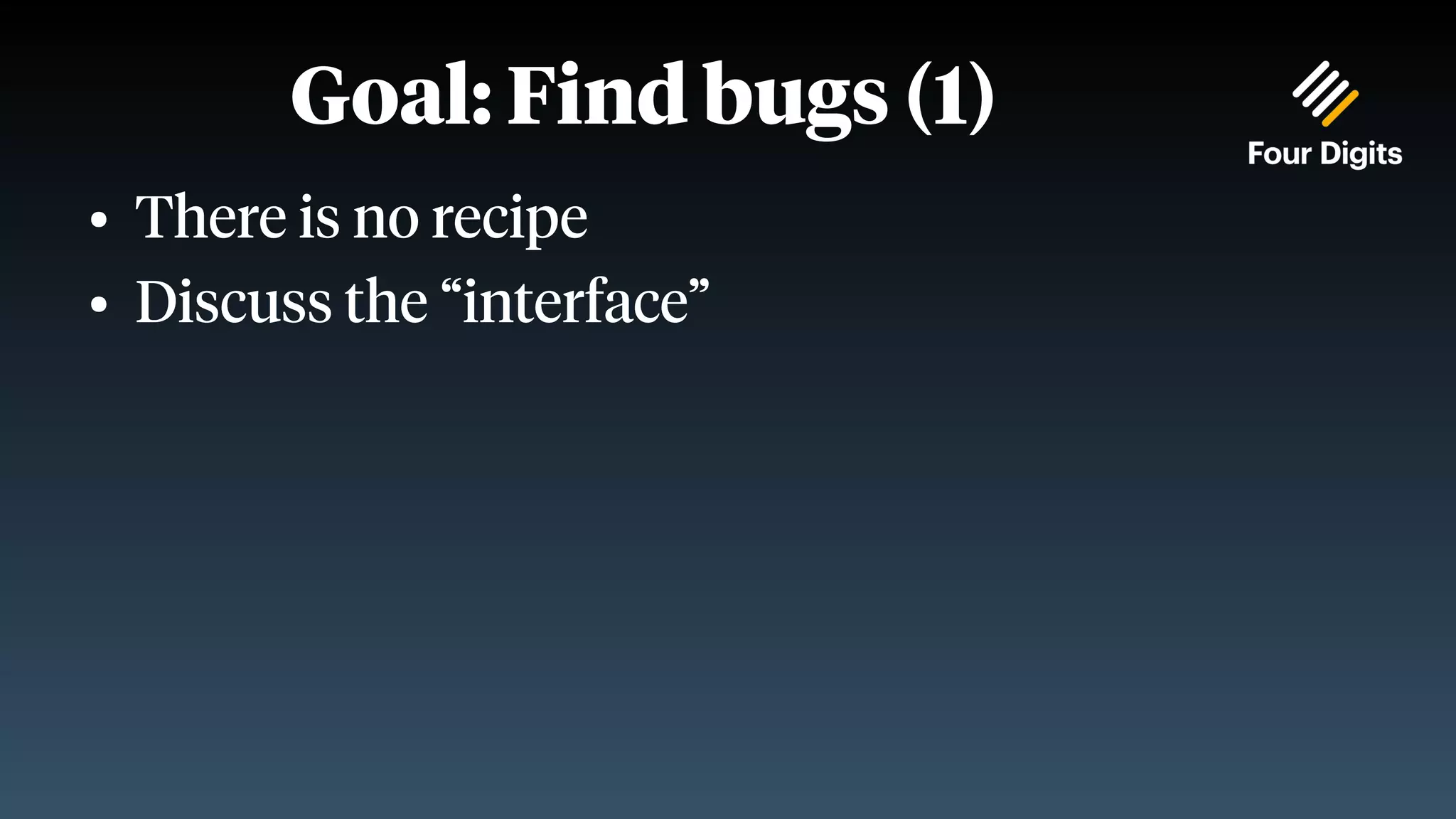The document provides practical pointers for effective code reviews, emphasizing goals such as finding bugs, ensuring maintainability, and sharing knowledge with team members. It suggests strategies like asking control questions, maintaining communication, and reviewing code in manageable segments. The presentation is aimed at enhancing the code review process to benefit both the individual developer and the team as a whole.
